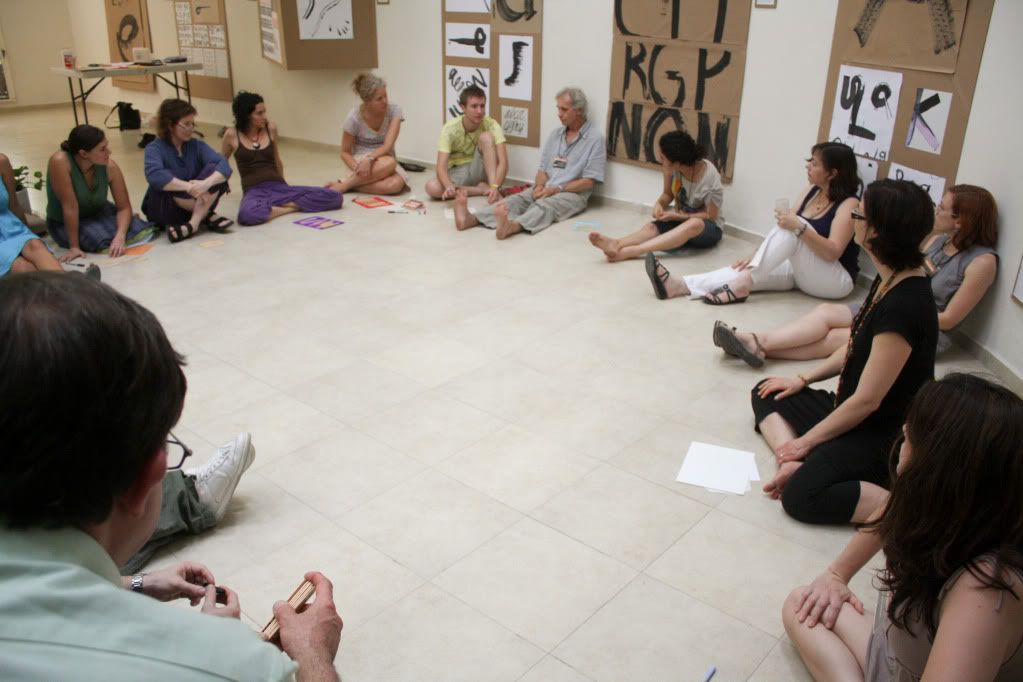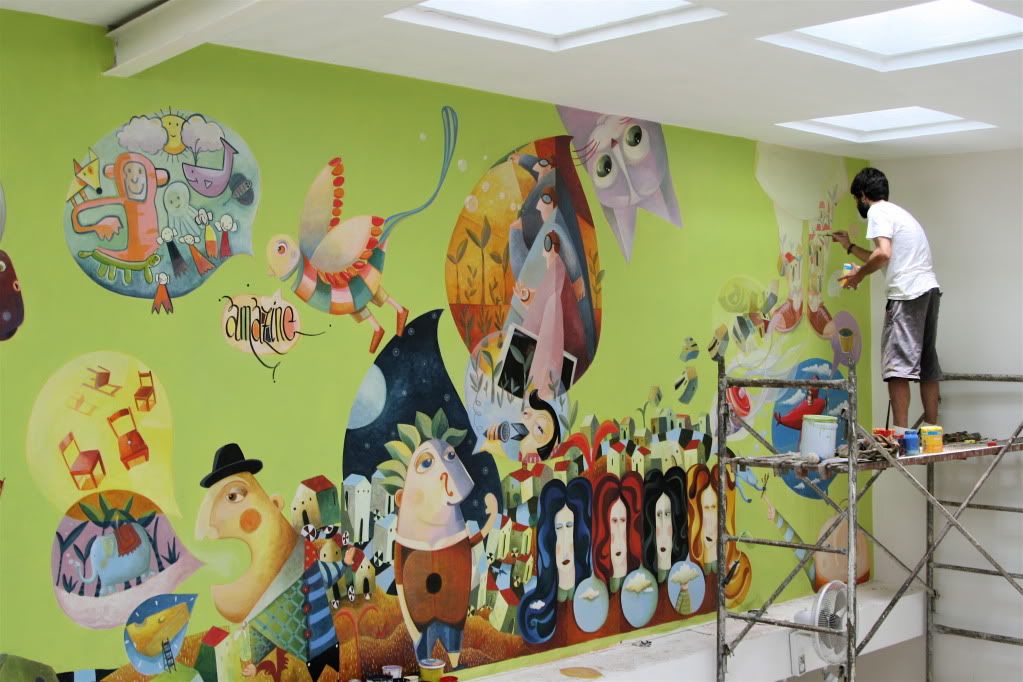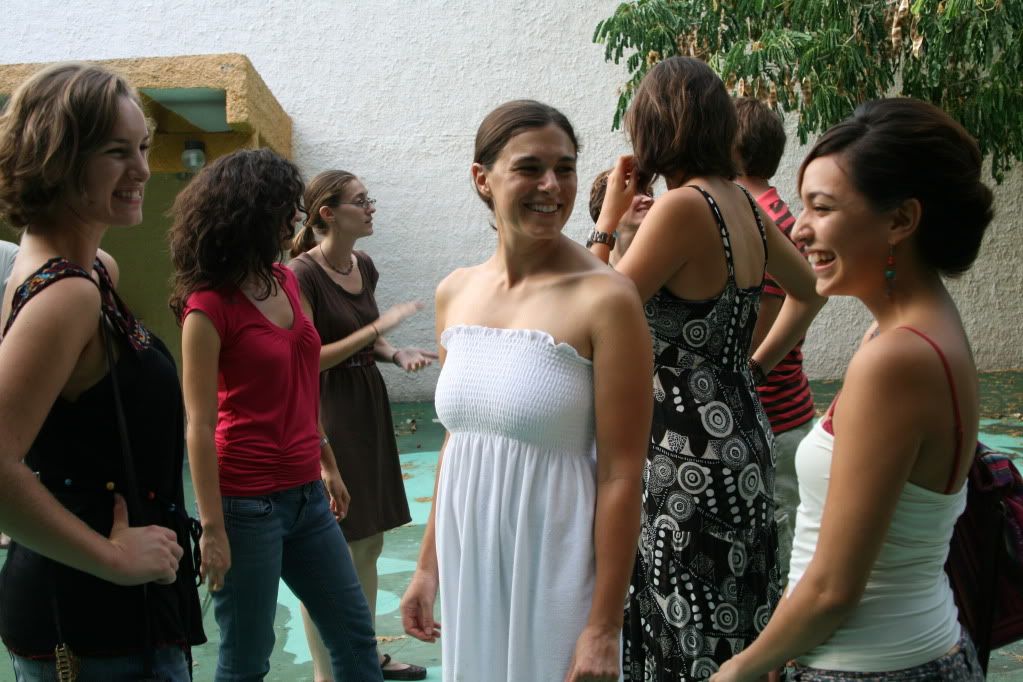As a teacher I know how paralyzing an administrative bureaucracy can be. When we're asked to fill out forms, to give batteries of standardized tests, to attend meetings where we are told precisely how to teach, to institute mandated curriculums and write the state standards on the board, we often lose the time and energy to engage our students in passionate and meaningful classroom work. Therefore when we opened a school, Habla, we knew we needed to proceed differently. We wanted to build a distinct school culture but without explicitly telling our teachers and staff how to teach. We sought an organic and collaborative process, but one that wouldn't end in a kind of laissez-faire attitude where there would be no coherence of curriculum or pedagogy from classroom to classroom.
The following is a glimpse at some of the structures we put in place to build a shared culture at our school without resorting to the usual top-down mandates.

1. Intentional Architecture. When we built the school we wanted it to feel like a warm and welcoming place that invited informal conversations outside of classrooms and encouraged our teachers and students to linger before heading home. We discussed these ideas with our architect and designed a reception area that welcomes everyone to the school and encourages conversation. In addition a large community space in the center of the school provides space for teachers and students when leaving classrooms to mix and spend some time talking before heading home or to the next class.

2. Design and Art. Rather than tell newcomers what the school is about, we want to show it. A full-scale mural in the community space at Habla demonstrates the school's emphasis on dialogue, community, play, and imagination. We also had our designer put one word in the reception area, CREATE, a word that lets students and teachers alike know that learning at Habla is a creative adventure.

3. Purposeful Collaboration. Even more important than the physical space is trusting in the capacity of our teachers to bring new ideas to the school. At the beginning of the year the teachers develop research questions they wish to investigate in their own classrooms. Throughout the year they discuss and refine their questions, collect their students' work, and present their findings to each other in the form of a PechaKucha. Much meeting and sharing of ideas occurs in formally scheduled staff meetings, but even more occurs between classes or during informal social events outside of school. To encourage this the directors of the school host all of the teachers for a few dinners a year at their own house.

4. Artist as Inspiration. At our school we hired a full-time teaching artist whose primary job is to collaboratively plan projects with teachers and co-teach with them in their classrooms. The artist's role is to serve as an agent of creativity. Our teachers often have a rough idea of a project they'd like to do but don't know quite how to go about bringing it to its full realization in the classroom. Having an artist to explore possibilities with helps the teachers to crystallize their own ideas and call upon the expertise of another to consider different ways of doing things. Our experience has been that a skilled and experienced teaching artist on staff increases the quality of the work across the entire school. In most schools such a position might seem like a luxury, but it was one of the first positions we hired.
5. Structuring Learning Around Big Ideas. Our curriculum is flexibly shaped around a set of big ideas for each semester that include the following: large concepts, learning outcomes, written products, core texts, and culminating events. The learning outcomes are the only fixed aspect of the curriculum and few outcomes are essential every semester so that the teacher can focus on them in-depth and give them the time they deserve. Although there are suggested core texts and culminating events, the teachers are free to adapt and change the curriculum in anyway they see fit in order to reach the learning outcomes. For instance, a learning outcome might be for students to write a narrative in the past tense. How students reach that point and what experiences they have is entirely up to them and their teacher.
6. Visible Teaching and Learning. All of our teachers and students are consistently finding ways to document and present their work. Another of our teaching artist's roles is to help teachers consider new ways to share their work with each other and with the public. Recently in a presentation for families our teachers digitally documented what happened in their classrooms and presented the products and the processes of their students. Watch one of the videos below.
[vimeo http://www.vimeo.com/26125191 w=400&h=300]
Three Kids Transform into Animals from Habla Center on Vimeo.
As I noted in my last post, two years after opening the school we feel we've developed a shared, common culture of what teaching and learning looks like in our classrooms. We are a small school with a small staff and one that does not have to report to any larger administrative bureaucracy, but I do believe that many of the structures we've put into place can be scaled up to larger schools and might provide alternatives to many of the demoralizing ways we are treating our teachers under the guise of school reform.